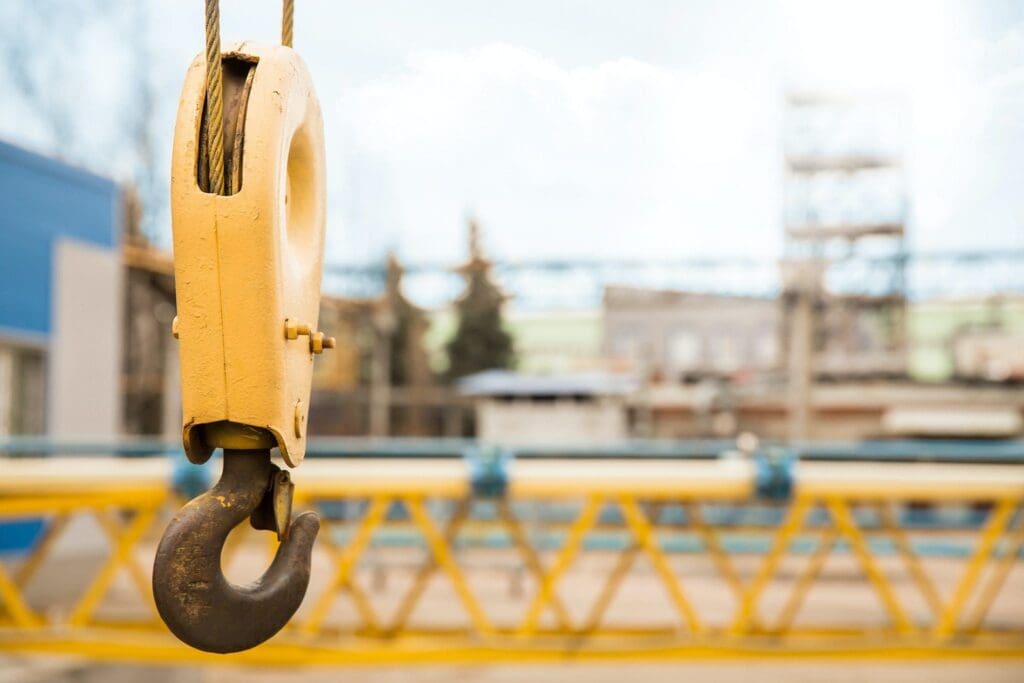Before the invention of cranes, the act of building required lifting objects manually. As societies developed and advanced, so did the mechanical means to build the civilizations these societies lived in. From the advent of the pulley system to today’s more technologically advanced cranes—like the lattice boom crawler crane—construction crews use cranes on virtually every job site. These machines make heavy-duty jobs possible.
Table of Contents
Crane Evolution
Before cranes, builders in ancient Greece had to manually lift construction tools and stone. This put an immense toll on the people doing the labor. This problem led to a mechanical invention: a pulley system that included tongs that could lift the blocks of stone.
The ancient Romans built on this design and added a block with three pulleys and a beam jib. These Roman cranes could be used without much physical effort. The Romans continued developing until their treadwheel cranes and pulleys could lift 60 times what the Greek pulley systems accomplished.
The Industrial Revolution brought about hydraulic-powered cranes. The invention of the telescopic jib and combustion engines resulted in the creation of mobile cranes. As more inventions came about, modern cranes began to take shape. Construction was able to be globalized and brought to every corner of the world.
The most commonly used cranes today are:
- Crawler cranes
- Mobile cranes
- Railway road cranes
- Telescopic cranes
- Tower cranes
Lattice Boom Crawler Crane Evolution
Of the most commonly used cranes in modern-day construction, the crawler crane is the largest and can lift loads in excess of 2,500 tons. This crane is mounted on an undercarriage with tracks, which ensures mobility and stability. Their mobility allows them to move up and down, side to side, and front to back. Their tank-like treads ensure they move easily through a construction site.
Since the treads provide stability they do not require the use of outriggers. However, they do require the most on-site assembly out of all the mobile cranes. This can include attaching tracks, assembling the lattice boom, and adding counterweights.
Due to the heavy-duty nature of the lattice boom crawler, they are the ideal crane for large-scale projects. Their multifunctional jibs allow the crane to be adjusted to any project. As the scale and scope of projects change, the lattice boom crawler crane has evolved to fit those needs.
1. Market for Crawler Cranes
There are many markets that are keeping the demand for crawler cranes high. Building and maintaining public facilities and infrastructures as well as renewable energy projects are all included. Crawler cranes are used for a variety of projects, ranging from installing or removing wind turbines, to music festival and event setup. As the need for energy-efficient infrastructure continues to grow, so will the need for crawler cranes.
2. Crane Technology
As advancements in technology are made, crane manufacturers are advancing as well. New lattice boom crawler crane models include user-friendly controls, display panels for information in-cab, and are easier to assemble. They are also more commonly including telematics, which are systems that generate work reports. These systems can predict total uptime and support the continued maintenance of the crane. Being able to fit a large crane on a small construction site has also been a recent technological advancement.
Career Outlook
As long as there are projects needing to be built, there will be a need for cranes. As society continues to grow, this need will only grow as well. A career in heavy equipment operation can provide reliable work to support you throughout your life.
HEC’s accelerated courses include instruction on operating various types of cranes used on construction sites. After receiving the Certificate of Heavy Equipment Operations – Lattice Boom Crawler Crane, students will have the skills and experience to operate this important machine.
In the course, students practice operating cranes to better prepare for their first job. HEC’s lattice boom crane training program will teach you about the various lattice boom crane parts, how they function, and how to operate them to ensure your safety, in as little as three weeks.
Visit our website to start the enrollment process today.

